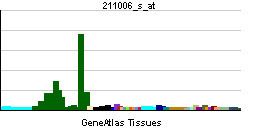Entrez 3745 | Ensembl ENSG00000158445 | |
 | ||
Aliases KCNB1, DRK1, KV2.1, h-DRK1, EIEE26, potassium voltage-gated channel subfamily B member 1 External IDs MGI: 96666 HomoloGene: 37988 GeneCards: KCNB1 | ||
Potassium voltage-gated channel, Shab-related subfamily, member 1, also known as KCNB1 or Kv2.1, is a protein that, in humans, is encoded by the KCNB1 gene.
Contents
Species and tissue distribution
Kv2.1 channels are widely expressed in various tissues in mammals, including humans. They are found in cardiomyocytes, skeletal muscles, vascular smooth muscles, placental vasculature, retina, and pancreatic β-cells.
Function
Voltage-gated potassium (Kv) channels represent the most complex class of voltage-gated ion channels from both functional and structural standpoints. Their diverse functions include regulating neurotransmitter release, heart rate, insulin secretion, neuronal excitability, epithelial electrolyte transport, smooth muscle contraction, and cell volume. Four sequence-related potassium channel genes - shaker, shaw, shab, and shal - have been identified in Drosophila, and each has been shown to have human homolog(s). This gene encodes a member of the potassium channel, voltage-gated, shab-related subfamily. This member is a delayed rectifier potassium channel and its activity is modulated by some other family members.
In mouse cardiomyocytes, Kv2.1 channel is the molecular substrate of major repolarization current IK-slow2. Transgenic mice, expressing a dominant-negative isoform of Kv2.1, exhibit markedly prolonged action potentials and demonstrate arrhythmia. In mammalian CNS neurons, Kv2.1 is a predominant delayed rectifier K+ current that regulates neuronal excitability, action potential duration, and tonic spiking. In Drosophila photoreceptor cells, the Kv2 channel is the key component of light-induced membrane voltage response. Genetic abolition of this current dramatically decreases photoreceptor information capacity.
Interactions
KCNB1 has been shown to interact with:
